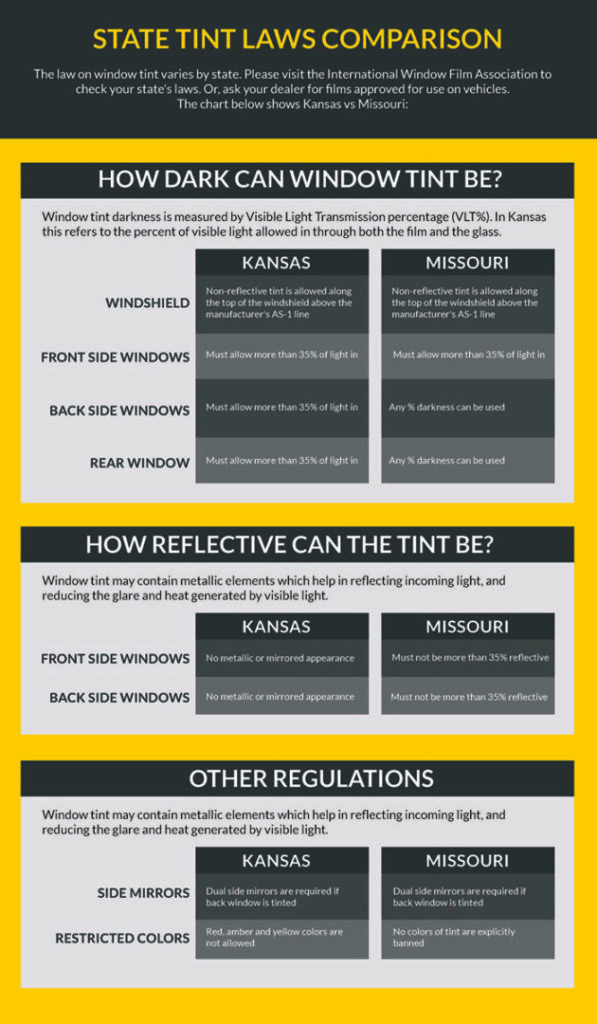Kansas & Missouri Car Window Tint Laws Comparison
Kansas & Missouri Window Tint Laws
Do You Know Local Auto Tint Laws?
Window tint laws vary by state. Please visit the International Window Film Association to check your state’s laws or ask your dealer for films approved for use on vehicles. Window tint darkness is measured by Visible Light Transmission percentage (VLT%). In Kansas and Missouri this refers to the percentage of visible light allowed in through both the film and the glass.
Kansas Window Tint Laws
- Windshield: Non-reflective tint is allowed along the top of the windshield above the manufacturer’s AS-1 line
- Front Side Windows: Must allow more than 35% of light in
- Back Side Windows: Must allow more than 35% of light in
- Rear Window: Must allow more than 35% of light in
Window tint may contain metallic elements, which help reflect incoming light and reduce the glare and heat generated by visible light.
- Front Side Windows: No metallic or mirrored appearance
- Back Side Windows: No metallic or mirrored appearance
- Side Mirrors: Dual side mirrors are required if back window is tinted
- Restricted Colors: Red, Amber, and Yellow colors are not allowed
Missouri Window Tint Laws
- Windshield: Non-reflective tint is allowed along the top of the windshield above the manufacturer’s AS-1 line
- Front Side Windows: Must allow more than 35% of light in
- Back Side Windows: Any % darkness can be used
- Rear Window: Any % darkness can be used
Window tint may contain metallic elements, which help reflect incoming light and reduce the glare and heat generated by visible light.
- Front Side Windows: Must not be more than 35% reflective
- Back Side Windows: Must not be more than 35% reflective
- Side Mirrors: Dual side mirrors are required if back window is tinted
- Restricted Colors: No colors of tint are explicitly banned

